Direwolf Hunting Habits: How the Ice Age’s Most Fearsome Wolves Worked Together to Survive
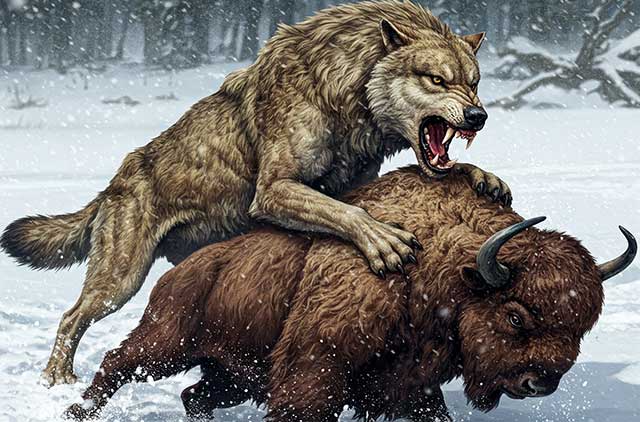
When we think of direwolves, we often imagine giant, terrifying beasts racing through snowy forests, jaws open and eyes locked on their prey. Thanks to pop culture, especially shows like Game of Thrones, they’ve become legendary. But behind the fiction, direwolves were very real, and their hunting habits are just as fascinating as the myths.Direwolf hunting habits.
So, how did these powerful predators actually hunt?
Did they go it alone, or work in teams?
And what kind of creatures were brave—or unlucky—enough to end up on their menu?
Let’s take a closer look at how direwolves hunted, survived, and thrived thousands of years ago.
Did Direwolves Hunt Alone or as a Team?
Imagine you’re a direwolf roaming the Ice Age plains. It’s freezing, and food is scarce. You’re not going to survive by taking on a mammoth alone. That’s where the pack comes in Direwolf hunting habits
Fossils found at places like the La Brea Tar Pits in California show us something interesting: dozens of direwolf skeletons found close together. That suggests they moved—and hunted—in groups.
But here’s the truly touching part: some of those bones had healed injuries. That likely means that injured direwolves were cared for by their pack—fed and protected while they recovered. These weren’t just savage hunters; they were social, loyal, and protective.
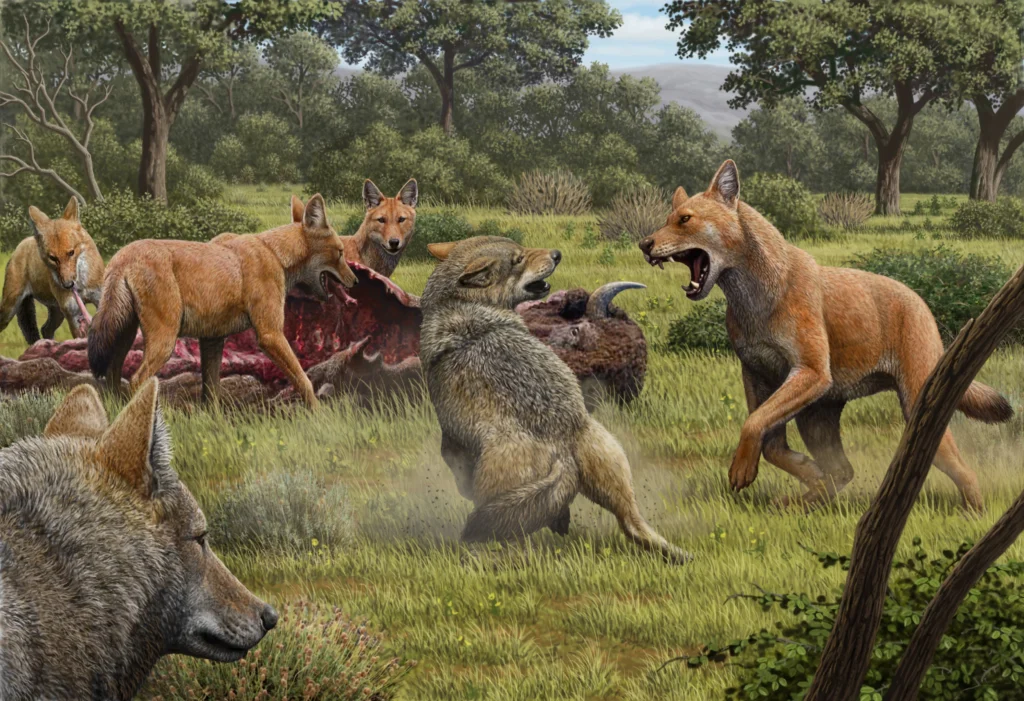
What Kind of Animals Did Direwolves Actually Hunt?
Direwolves didn’t have it easy. Their world was filled with giants: bison the size of trucks, towering mammoths, and thick-skinned ground sloths. Prey like that wasn’t just big—it was dangerous.Direwolf hunting habits
So what did they go after?
Scientists believe their regular menu included:
- Ancient bison
- Ice Age horses
- Ground sloths
- Camels
- And possibly young mammoths or mastodons
Hunting these animals took teamwork, brute strength, and smart strategy. A single mistake could mean a broken bone—or worse. That’s why hunting in packs gave them the upper hand.
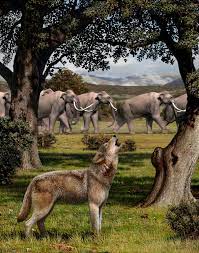
How Did Direwolves Pull Off a Successful Hunt?
Without cameras or eyewitnesses, we rely on clues from fossils and modern wolves to guess how direwolves hunted. And the picture we’re getting is pretty exciting.
1. Did They Set Traps or Chase Down Their Prey?
Direwolves hunting habits weren’t built for long-distance chases. They had muscular builds and short, strong legs, more like sprinters than marathon runners. So instead of chasing prey for miles, they likely ambushed it—sneaking in close, surrounding it, and striking fast.
2. Were They Smart About Who They Hunted?
Yes—very smart. Just like modern wolves, direwolves likely targeted weaker animals: the old, the young, or the injured. It wasn’t cowardly—it was smart. Why risk your life against the strongest bison when there’s an easier target nearby?
3. Did They Use Pack Coordination?
Absolutely. They weren’t just a group of wolves running wildly—they had roles. Some would chase the prey toward others, while the stronger wolves might deliver the final blow. This kind of teamwork takes communication, trust, and experience—a real wolf version of a battle plan.
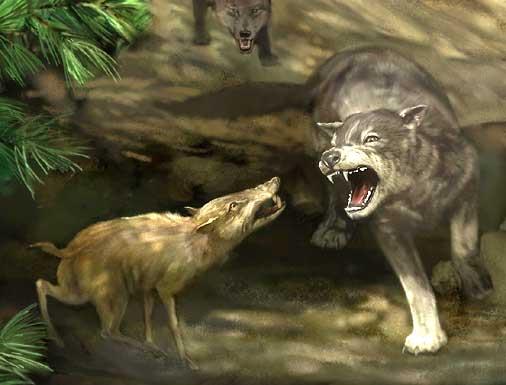
What Clues Do Fossils Give Us About direwolf Hunts?
The La Brea Tar Pits, where many direwolf remains have been found, tell a chilling story. Animals would get trapped in sticky tar, and predators like direwolves would show up for what they thought was an easy meal—only to get stuck themselves.
The large number of direwolf fossils in these pits tells us they often hunted (or scavenged) together. Some bones are heavily worn or broken, hinting at the brutal, bone-crushing life they lived. Others show healing, again pointing to a caring pack dynamic.

Were direwolf Bodies Built for the Hunt?
Every part of a direwolf’s body screamed “hunter.”
- Their massive jaws could crush bones
- Their muscular bodies helped them hold down large prey
- Their thick skulls could take hits and keep going
- Their large teeth were perfect for tearing through flesh
Compared to today’s gray wolves, direwolves were heavier and more powerful—but not as fast. They didn’t need to run down prey across the plains. They relied on power and teamwork, not speed.
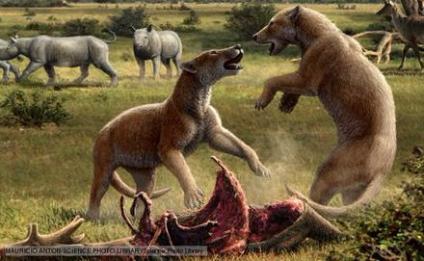
Were direwolf Hunters or Scavengers—or Both?
Both! Like most predators today (think lions or bears), direwolves were opportunists. If they found a dead animal or could steal a kill from another predator, they’d take it. Fossils even show bite marks that may have come from scavenging carcasses.
They didn’t let pride get in the way of survival.

What Does direwolf All Say About Their Intelligence?
It says a lot. These weren’t just mindless beasts—they were smart, social animals. They communicated through body language, howls, and scents. They shared food, looked after their own, and worked together to survive in one of the toughest eras in Earth’s history.
That kind of cooperation requires more than instinct—it takes intelligence and empathy, traits we still admire in wolves today.
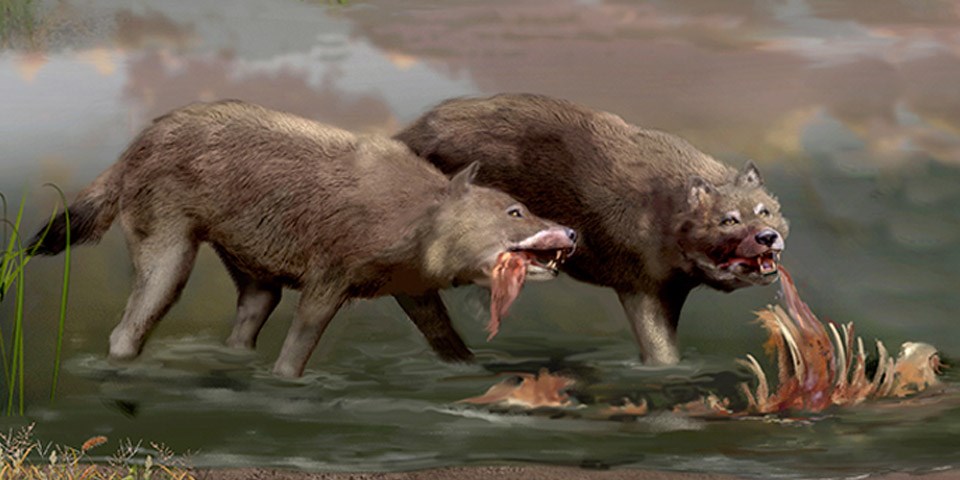
What Can We Learn from How Direwolves Hunted?
The story of how direwolves hunted isn’t just about survival. It’s about teamwork, intelligence, and adaptability. Despite facing massive prey, bitter cold, and fierce competition, they found ways to thrive.
While the direwolf disappeared about 9,500 years ago, their legacy lives on—in the fossil record, in the wolves of today, and in the stories we tell.
So next time you hear a wolf’s howl, think of its ancient cousin:
The direwolf—strong, smart, and part of one of the most impressive hunting teams nature ever created.
